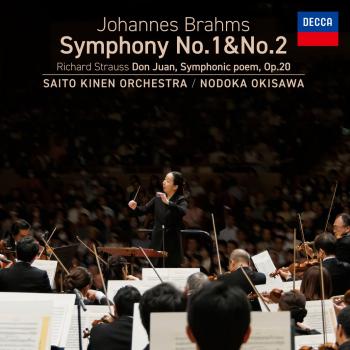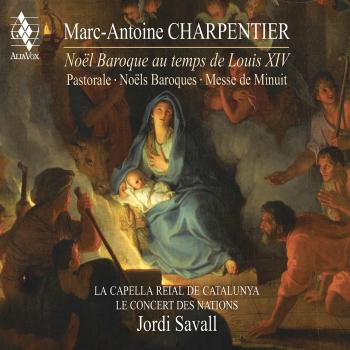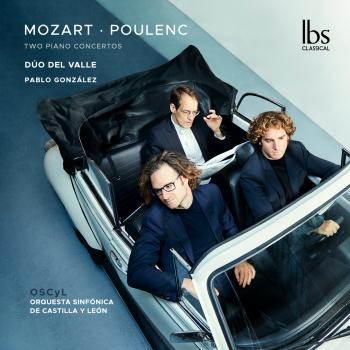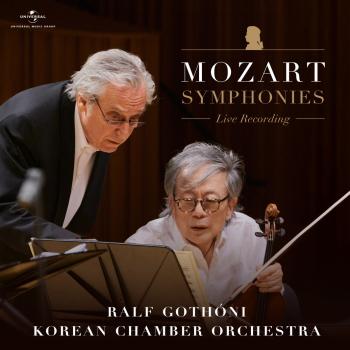
Thirion: Trio pour piano, violon et violoncelle & Quatuor à cordes Quatuor Stanislas
Album Info
Album Veröffentlichung:
2016
HRA-Veröffentlichung:
12.04.2016
Label: Timpani Records
Genre: Classical
Subgenre: Chamber Music
Interpret: Quatuor Stanislas, Laurent Wagschal, Solenne Païdassi & Sébastien Van Kuijk
Komponist: Louis Thirion (1879-1966)
Das Album enthält Albumcover Booklet (PDF)
Entschuldigen Sie bitte!
Sehr geehrter HIGHRESAUDIO Besucher,
leider kann das Album zurzeit aufgrund von Länder- und Lizenzbeschränkungen nicht gekauft werden oder uns liegt der offizielle Veröffentlichungstermin für Ihr Land noch nicht vor. Wir aktualisieren unsere Veröffentlichungstermine ein- bis zweimal die Woche. Bitte schauen Sie ab und zu mal wieder rein.
Wir empfehlen Ihnen das Album auf Ihre Merkliste zu setzen.
Wir bedanken uns für Ihr Verständnis und Ihre Geduld.
Ihr, HIGHRESAUDIO
- 1 I. Impétueusement 06:35
- 2 II. Pas trop vite 05:34
- 3 III. Lent 06:54
- 4 IV. Joyeusement animé 06:10
- 5 I. Très modéré - Plus vite 07:34
- 6 II. Assez vif 03:40
- 7 III. Adagio 09:27
- 8 IV. Très animé et véhément 05:42
Info zu Thirion: Trio pour piano, violon et violoncelle & Quatuor à cordes
Georges-Martin Witkowski in Lyon, Guy Ropartz in Nancy and Strasbourg, Paul Ladmirault in Nantes, Aymé Kunc in Toulouse: all these composers, having made the choice of living away from Paris, were condemned to see their work deprived of its legitimate reputation and influence. No one would experience this isolation, a corollary of the centralisation of French intellectual life, more harshly than the Lorraine native Louis Thirion, who was educated in Nancy where he would spend his entire career.
Louis Thirion was born 13 February 1879 in Baccarat, a small city in the Meurthe Valley, which began to prosper in the mid-18th century, thanks to its famous glassworks. There, his father, an organist, was director of music. At the Nancy Conservatory, he studied piano and organ with Henri Hess and, especially, harmony and composition with Guy Ropartz.
Following the 1870 defeat in the Franco-Prussian War and the ceding of most of Alsace-Lorraine to Germany, part of the population in those regions retreated to France, settling in Nancy and its environs. In thirty years, the city’s population doubled, reaching more than 100,000 in- habitants by 1900. Nancy experienced an intense economic and industrial expansion thanks to the metallurgical and various other industries. This dynamism brought with it an extraordinary artistic boom, and the city became the French cradle of Art Nouveau, with Émile Gallé, Louis Majorelle, Victor Prouvé and Jacques Gruber, who made the most of technical innovations, in particular in the fields of wrought iron, ceramics and glassmaking. Music was not to be outdone, and there was spectacular development after 1894, the year the direction of the Conservatory and of subscription concerts was entrusted to a young disciple of César Franck: Guy Ropartz. A remarkable conductor, he was going to endow the Lorraine city with a musical life worthy of it, thanks to programming that encouraged modern music of the day. At the same time, his gifts as an educator and administrator allowed the Conservatory to attain a distinguished level.
Laurent Wagschal, piano
Solenne Païdassi, violin
Sébastien van Kuijk, cello
Quatuor Stanislas
Keine Alben gefunden.
Keine Biografie vorhanden.
Booklet für Thirion: Trio pour piano, violon et violoncelle & Quatuor à cordes







